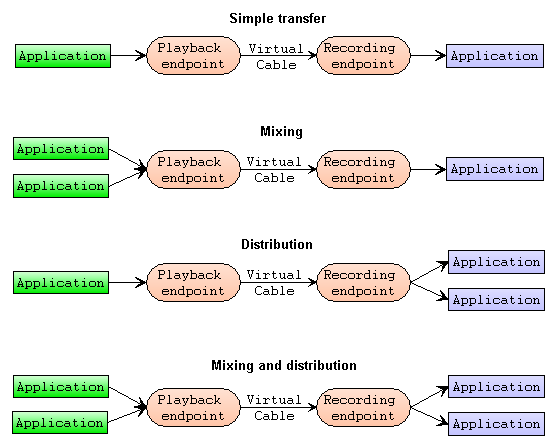
- #AUDIO LOOPBACK WINDOWS XP MOVIE#
- #AUDIO LOOPBACK WINDOWS XP DRIVER#
- #AUDIO LOOPBACK WINDOWS XP DOWNLOAD#
- #AUDIO LOOPBACK WINDOWS XP WINDOWS#
#AUDIO LOOPBACK WINDOWS XP DRIVER#
R2) "Analog mixer" capture (Stereo Mix, What You Hear, etc.) This pulls the audio data from the sound card after it's gone through the driver but before it goes out the speaker or jack.
#AUDIO LOOPBACK WINDOWS XP WINDOWS#
R1) "WASAPI loopback" capture (Windows Vista and later only.) This pulls the audio data from the Windows audio engine just before it's passed down to the driver. Let's talk about the three ways to do loopback recording. Is it possible to capture sound even if sound is muted in Windows XP? If ( mixerSetControlDetails((HMIXEROBJ)hmixer, &mxcd, MIXER_SETCONTROLDETAILSF_VALUE) = MMSYSERR_NOERROR ) If ( mixerGetLineControls((HMIXEROBJ)hmixer,&mxlc, MIXER_GETLINECONTROLSF_ONEBYTYPE) = MMSYSERR_NOERROR ) Mxlc.dwControlType = MIXERCONTROL_CONTROLTYPE_MUTE If ( mixerGetLineInfo((HMIXEROBJ)hmixer, &mxl, MIXER_GETLINEINFOF_COMPONENTTYPE) = MMSYSERR_NOERROR ) Mxl.dwComponentType = MIXERLINE_COMPONENTTYPE_DST_SPEAKERS If ( mixerOpen(&hmixer, 0, 0, 0, 0) = MMSYSERR_NOERROR ) I found that this seems not work in Windows XP (I use "Stereo Mix" and waveInXX).Ģ. This is great that I can play sound and record it without disturbing the people near my notebook. I found if I press mute hot-key my loopback capture application still can capture sound from endpoint.
#AUDIO LOOPBACK WINDOWS XP MOVIE#
I play a movie with Windows media player and run my program. If you mute the external speakers, "WASAPI loopback" capture and "analog mixer" capture will work, but "hardware loopback" capture won't work.I wrote a program with WASAPI loopback capture interface to record what I hear in Windows 7. If you mute the audio endpoint, and there is a mute control in the driver, only "WASAPI loopback" capture will work. I infer that your audio driver must have a mute control, because loopbback recording is working for you. If you mute the audio endpoint, and there is no mute control in the driver, none of the loopback recording methods will work. If you mute the app, none of the looback recording methods will work. If the ENDPOINT_HARDWARE_SUPPORT_MUTEįlag is set, there's a mute control in the driver.
#AUDIO LOOPBACK WINDOWS XP DOWNLOAD#
To tell whether an audio driver exposes a mute control for a particular endpoint, you can download KSStudio (included in the Windows Driver Kit) and look at the topology, or you can call IAudioEndpointVolume::QueryHardwareSupport. M4) On your external speakers or amplifier, turn the volume all the way down. Windows sets the mute control in the driver (but continues to process unmutedĪudio, including handing it down to the driver.)


M3) Mute audio endpoint (in the Sound control panel or in the volume control flyout or in the left half of the volume mixer) on an audio driver that implements a mute control.

(I believe it's CAudioVolume) into the audio pipeline, and hands silence to the driver. Windows injects a muting "audio processing object" M2) Mute audio endpoint (in the Sound control panel or in the volume control flyout or in the left half of the volume mixer) on an audio driver that does not implement a mute control. M1) Mute the app (either with the UI in the app or in the right half of the Volume Mixer.) This stops the audio data from going to the Windows audio engine. Now let's talk about the four ways to do muting. This involves getting an audio cable, plugging one end in the "line out" or headphone jack, and the other end in the "line in" or microphone jack, and then recording from the "line in" or microphone.

I wrote a program with WASAPI loopback capture interface to record what I hear in Windows 7.


 0 kommentar(er)
0 kommentar(er)
